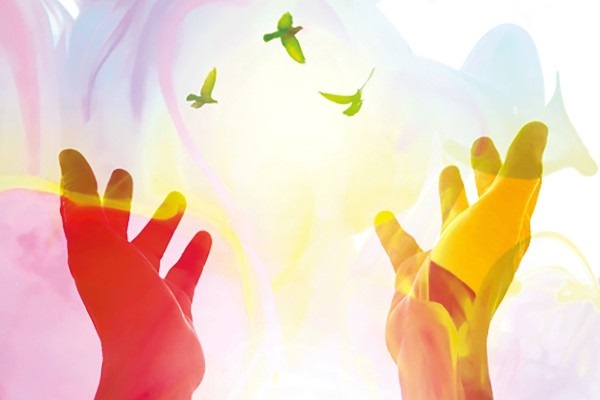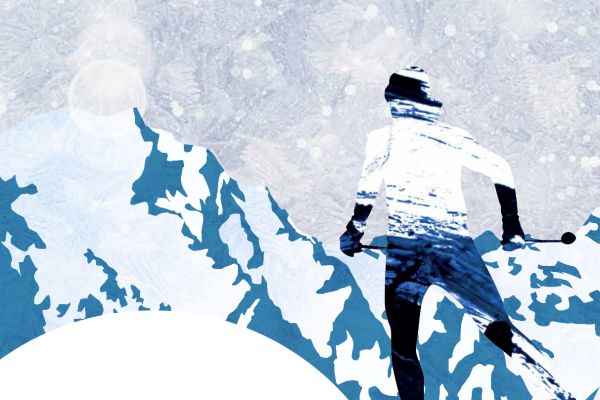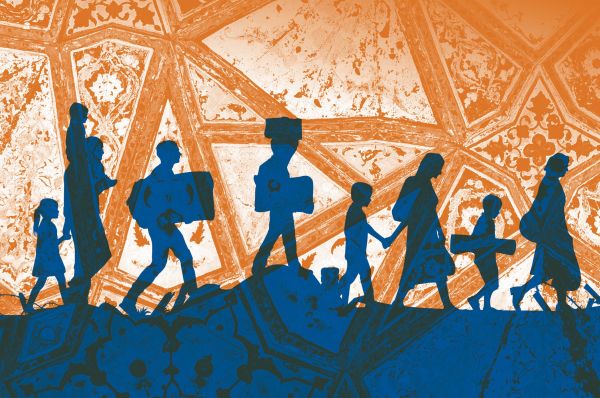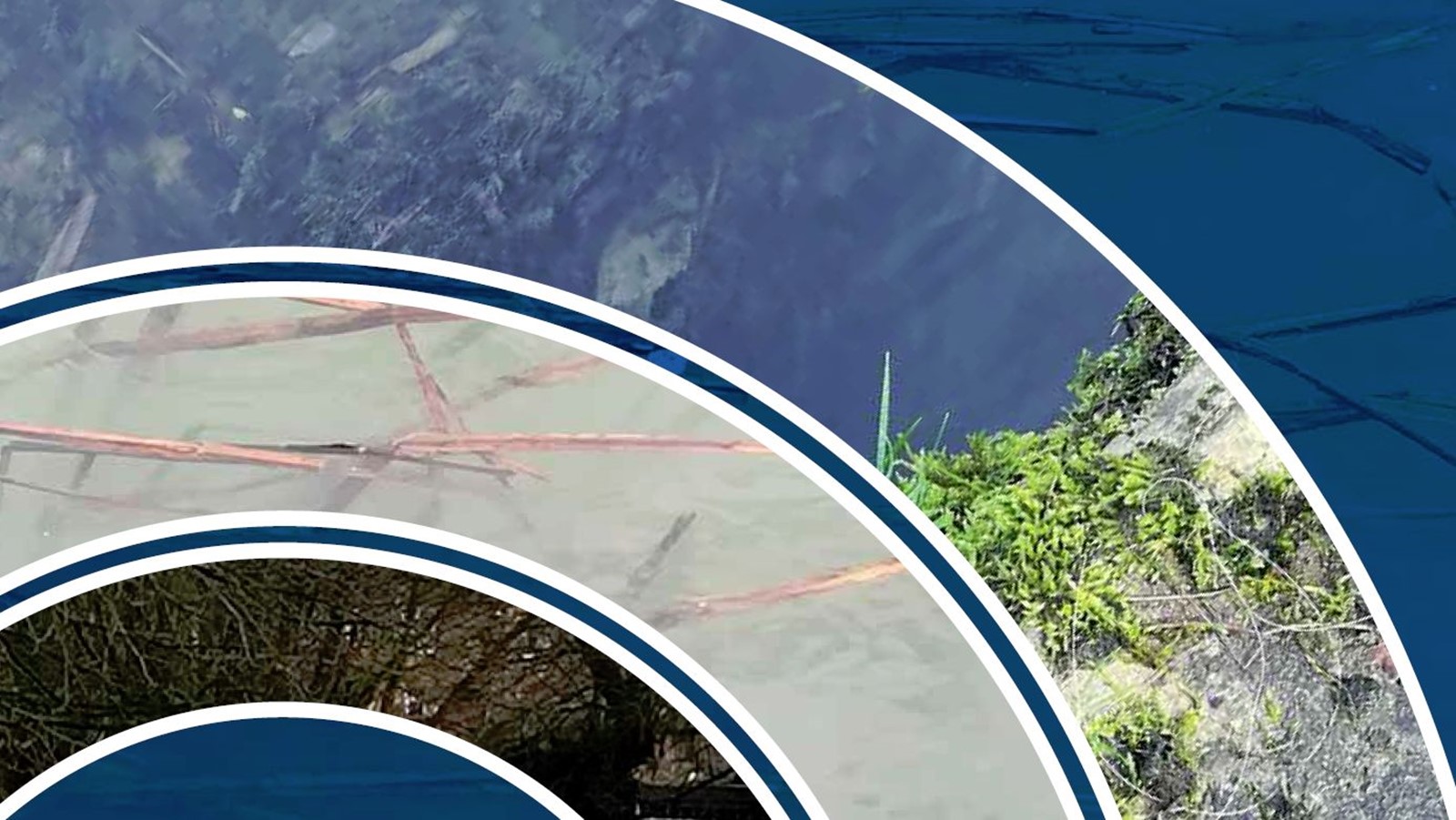'Okanagans teach that the body is Earth itself. Our flesh, blood, and bones are Earth-body; in all cycles in which Earth moves, so does our body. We are everything that surrounds us, including the vast forces we only glimpse’ – Jeanette Armstrong.1
During the regenerative dark time of the winter solstice, the midwinter, the seeds of this article were starting to stir and germinate. The ancient, earth-centred ritual of the solstice draws people together for feasting, fire and reflection. There is a still-point at this deep, dark time, before the earth moves into her next cycle when the sun begins to wax (increase) once more.
The Okanagans are a First Nations and Native American people whose traditional territory spans the US-Canada boundary in Washington State and British Columbia in the Okanagan Country region. The above quote, by Jeanette Armstrong of the Okanagan people, states that, ‘we are everything that surrounds us, including the vast forces we only glimpse’.1 She does not say that we are part of everything around us, she isn’t suggesting that we are joined to nature; both descriptions could suggest a separate ‘I’ to join with ‘nature’. She tells us hat the teaching of the Okanagans, is that the body is earth itself, and as earth-body, we move in all cycles that the earth moves in. So we too are a solstice, with a still-point, a deep dark to be explored; we ebb and flow, wax and wane, as human expressions of divine presence, with the capacity to know our essential nature. A wholearth approach sees divinity in the manifest earth around and within us.
Muhyiddin Ibn ‘Arabi, the 12th century Andalusian mystic, philosopher, poet and sage, speaks about a ‘Unity of Being’ or a ‘Oneness of Being’. For Ibn ‘Arabi, the diversity of the world, the trees, people, birds, books, clothing, wind, are manifestations of oneness in a multiplicity of form, a diversity within unity. So, as you can see, oneness doesn’t mean sameness; it also doesn’t mean two or more separate things joining to create a unity. We can open up the above point about connectedness a little further. From the perspective of a Unity of Being, all apparent things are connected because there is only one thing. Ibn ‘Arabi says that ‘multiplicity is due to different points of view, not to a division in the one essence’.2 There is only one essential reality and many points of view about this. These many points of view appear to multiply the one essence, leading us to believe that we are seeing many things, rather than only one. Oneness, the reality, has one essence and many names: Beloved, God, Great Spirit, Awareness, Divine Mystery, Tao, Great Mother, to name but a few.
If you, as awareness, turn your attention towards the felt-sense in your body just now as you sit reading this article, you may perhaps realise there is nothing more intimate than this one thing. This circle of oneness, by its nature, is all inclusive, and taken to its logical conclusion, this includes who we take ourselves to be, and all our experiences. There is nothing, nothing outside oneness; there couldn’t be. What is being pointed to here hugely challenges the conceptual mind, the predominant operating force in the Western world that perceives life through the lens of dualism, the seedbed for the roots and branches of the skin-encapsulated ego. From a wholearth or oneness way of knowing who we are and the world, we are already home, and we already are what we (and our clients) are looking for. So, take a moment to ask yourself, how does this, or could this, change the way you relate to yourself, earth and people?
A wholearth approach does not deny or overlook the feeling and appearance of separation, for this too is an expression of the real. It does not try to transcend the pain, desires and beauty of the world and neither does it over-analyse or try to fix the suffering of our human condition. Rather, it says, ‘this too, my love, this too’. This movement, this inclusivity, is the intimacy of the one, recognising and receiving itself. I appreciate the non-dual teacher Adyashanti’s way of describing these moments: he says, this is Love coming back for itself.3 This approach is not passive and neither does it have an ‘anything goes’ mentality. In the clear seeing of our essential nature is the radiance of discernment, right action, compassion and awe at the mystery and manifestation of what it is to be human. The ground of the wholearth approach is relational; it arises from body-earth; at heart is the natural interweaving of intuition, flow, inclusivity, clarity and pacing. We could therefore say that this approach is the way of the Divine Feminine, an archetype or energetic orientation, present in both women and men, that is widely considered to be an emerging guiding force in the climatic, political, economic and social crises we are living through.
Each one of us at some time in our lives, or perhaps on a regular basis, knows the feeling of separation or dislocation from the life of our body, the communities around us and the physical landscape we inhabit, that physically shapes and conditions us as much as the landscapes of family, nation and culture. Last year, at a symposium exploring place and belonging, Sharon Blackie, author of If Women Rose Rooted, asked the assembled group of 50, how many people knew about the physical geology of the place where they lived.4 Not more than four people raised their hands. My hand hovered. I knew the bare bones, that are the clay, chalk and sand beneath my feet, and the rivers and streams that are home to heron, kingfisher and swan, and I was aware that my knowledge lacked breadth and depth. I also knew in my heart and gut that by becoming more intimate with the earth-body I inhabited, its history and flora and fauna, I would be exposed to a deeper intimacy and bonding with place, body and home that was much needed, and wanted. So why the resistance? I justified my holding back by saying, having ‘just’ moved a few years earlier, from a different part of Oxford, after a major transition in my life, I hadn’t been settled enough to explore this. This was a partial truth and I knew it. Barely visible and creating unease in the shadowlands of my psyche, skulked sadness and resistance. Inspired
by the symposium, the time had come to welcome in these outcast feelings, through the presence that said, ‘this too, my love, this too’.
Through the inclusivity of this wholearth approach, what emerged as I, presence, turned towards my body without agenda or interpretation, was a deep and raw grief for the earth, hills and wildness of the Peak District that I had ‘left behind’ when moving to Oxford, some two decades earlier. The current earth-body of Oxford could not yet be welcomed in, because the feelings of loss for hill and moor had not yet been heard and exposed for what they were. For healing – knowing myself whole – to happen, I needed to fully mourn, without investing in the story, my apparent loss of this beloved, place; the horses, snowy winters and gritstone walls. It was through the portal of my bodily felt-sense of the resistance and sadness that the whole landscape of my grief was allowed to blossom and dissolve over time. Love came back for itself, and the grief was naturally liberated. The Peak District could be loved with an even fuller heart, and a growing intimacy with the earth-body of Oxford began to flower. In so doing, the delicate, piercing dance that is our conscious grieving, which is both a doing and a non-doing, my life and work, have taken on new dimensions and I am blessed with a fuller sense of being. We barely have a culture of grieving for the deaths and losses in our human families; we certainly don’t (yet) have a culture of grieving for earth, place and endangered species. Though the inspiring work of Joanna Macy (environmental activist, author and scholar), ‘The Work that Reconnects’, is certainly bringing about this sea change.5
Some of the work I do happens in what we commonly call ‘outside’, and some of my work happens inside in my practice room. There is a place, enigmatically named ‘Tumbling Bay’, in Oxford, where I work therapeutically and ceremonially. Tumbling Bay is a former open-air, Victorian bathing area, fed by the river Thames. The stepped platforms of two weirs at either end of the stone pools create mini-waterfalls that contrast the way in which the water moves at these points with the generally slow-moving slither of the main body of water. The stepped platforms also bring the voice of the water alive as it tumbles, sprays and brightens the whole energy of the place. To the right is a row of elder, hawthorn, bramble and ash trees bordering the allotments. At the far end of the pool, where the ducks often gather, is a 70ft magnificent horse chestnut ‘guardian’. Kingfisher, heron and crow bless this place with their colour, stillness and caw. What I love most about this place, or equally most with all of the above, is the smell of the river; the earthly alchemical scent of reed, mud, movement, leaf, moss and sky entwined. I can feel that the essence, the spirit, of the place has started to recognise me and is getting to know me and my work. I know that I am welcomed here as I consciously receive and participate in the life of this place as earth-body.
For Earth Care Day 2017, I organised a contemplative litter-pick of the area with a local sangha (spiritual community). The intention was to bring our meditation practice into action as a form of service to the broader community. Litter-picking is an excellent way to get to know a place, and ourselves, because of the necessity for paying attention. Attention to bodily movements, to what is safe and unsafe to pick up, to what is literally beneath our feet, and to the whole dynamic field of extended nature in all directions. In reflecting on the lives of the peregrine (the monks, anchorites and solitaries who travelled to the wild places of Britain and Ireland between 500–1000 AD), Robert Macfarlane described how, for these women and men, ‘attention was a form of devotion and noticing continuous with worship’.6
It is in (and as) open awareness, paying embodied attention to our actual experience, that the fabricated world of the dualistic mind, where the skin-encapsulated ego and projection of ‘other’ takes shape, can effortlessly be seen for what it is, and the vast forces we can only glimpse, our essential nature, can be tasted. The taste we start to acquire is the knowing that what we explore, is also exploring us.
In the approach to Tumbling Bay with a client, I invite us to pause, look around, notice where the attention is being called: ‘Notice what is speaking to you’, I might say, ‘and how this is felt in your earth-body’. Breathing slows… The perceptual field widens. A body of ash, willow and silver birch calls us home to this moment. A few steps further on and the path narrows, where autumn’s brambles have burst their banks and toss and tumble for territory. Their abundance requires us to walk in single file at this point, surrendering to their viney effulgence. A few steps further on, around the corner, and the sight and sound of the Bay’s fluid body start to shape our senses and perceptions. River-water-body and human-water-body exchanging currents of recognition. I invite us to pause again. ‘What do you notice now? What’s calling you? How does it feel to be here in your humanness as earth-body?’ I might ask. Depending on who I’m working with and what we are exploring, I may tell my client about a simple, traditional ritual of offering a gift to the place and the four directions with their corresponding elements. In my pocket, I keep a small bag of dried petals and lavender for such moments. One takes a pinch, puts the breath into the offering, touches it to the heart and offers it up. This greeting is similar to the custom of taking flowers, a bottle of wine or something handmade when visiting a valued friend or relative. The rest of the session can then unfold within the intimacy and inclusivity of this wholearth approach.
We are relational beings. Much of our early wounding happens as part of (human-to-human) relationships, and much healing can happen in a safe, compassionately attuned, human-to-human relationship. But this is only half the story. We are relational beings with the wholearth. The conventional, and I would add, limiting, perspective on the influencing ‘world’ of the prenate, newborn and child, is usually mother, and immediate family circumstances. Earth is realised as our larger body, indeed our original mother, from a wholearth perspective. In so doing, dependency and bonding take on a whole new meaning, and with this a new understanding of responsibility. It is well documented that what we feel connected to, we care about, and what we feel separate from or alienated from, we are more likely to abuse. The suffering we experience from our unexplored beliefs in separation manifest through our myriad addictions, dysfunctional relationships, self-harm and violence. In some communities in some parts of the world, we are gradually starting to recognise the effects of these beliefs, in our destructive attitudes and behaviours towards our vaster earth-body. The Great Turning, as Joanna Macy describes these times we are living through, is about becoming more conscious of who we actually are, and living in alignment with this. Which includes feeling the pain, intimacy and beauty of being here, and belonging here to earth, as earth-body.
The Okanagan word for ‘body’ is ‘the land dreaming capacity’.1 The word for ‘land’ and ‘bodies’ is known by the same root syllable. However unconsciously, we have created or dreamed the world into being as it is now. It is through an ‘innocent misunderstanding’, to borrow again from Adyashanti, ‘that we think we are a human being in the relative world seeking the experience of Oneness, but actually we are the One expressing itself as the experience of being a human being.’3 So, as the wheel of the year turns and winter darkness wanes, the illumination of the greenfire of spring emerges, and calls us to gather the Grace of Being that we are, and consciously dream a reality that expresses the true magnificence and diversity of this wholearth.
Ally Stott is a psychotherapist and craniosacral therapist who brings a Wholearth approach to her life and work in Oxford. She offers retreats, and co-facilitates Discovering Unity courses.
www.allystott.co.uk
More from Thresholds

Giving voice to your soul
Open article: Ruth Groff and Cath Hancox describe their creative work with personal development groups in training counsellors. Thresholds, January 2018

Experiences of undertaking research into spirituality - a personal and spiritual journey
Free article: Jill Buckeldee reflects on her experience of studying for a PhD. Thresholds, Autumn 2017

On the supportive role of Islam in working with refugees, asylum seekers and vulnerable migrants
Open article: Sushila Dhall reflects on her work with Muslim refugees. Thresholds, Summer 2017
References
1. Armstrong J. I stand with you against the disorder. Yes Magazine 2005; 8 November: 1–4.
2. Affifi AE. The twenty nine pages. Roxburgh: Beshara Publications; 1998.
3. Aydashanti https://www.goodreads.com/quotes (accessed 19 February 2018).
4. Blackie S. If women rose rooted. Tewkesbury: September Publishing; 2016.
5. https://workthatreconnects.org/ (accessed 19 February 2018).
6. Macfarlane R. The wild places. London: Granta Books; 2017.
